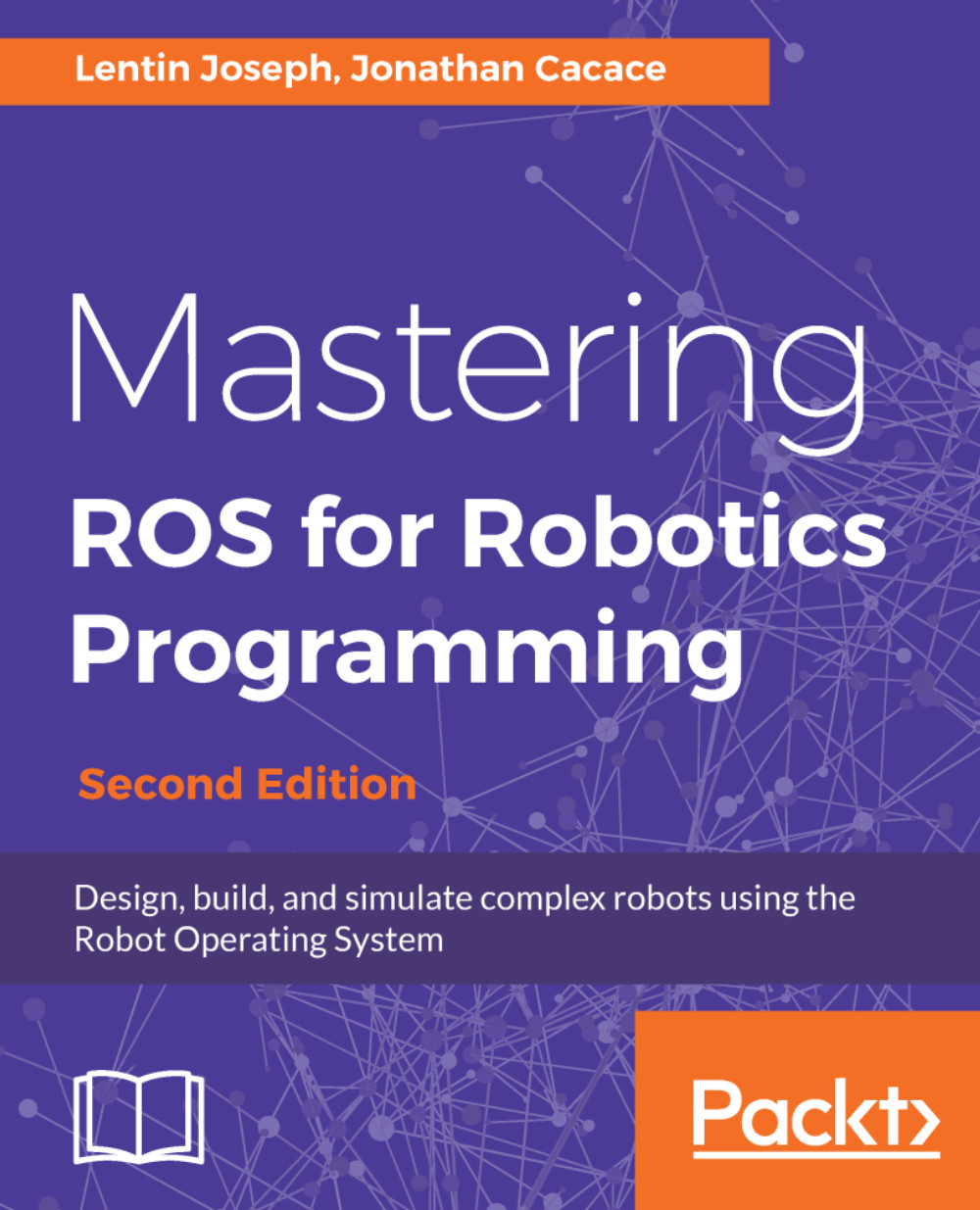Chapter 1, Introduction to ROS, gives you an understanding of the core underlying concepts of ROS.
Chapter 2, Getting Started with ROS Programming, explains how to work with ROS packages.
Chapter 3, Working with 3D Robot Modeling in ROS, discusses the design of two robots; one is a seven Degree of Freedom (DOF) manipulator and the other is a differential drive robot.
Chapter 4, Simulating Robots Using ROS and Gazebo, discusses the simulation of a seven DOF arm, differential wheeled robots, and ROS controllers that help control robot joints in Gazebo.
Chapter 5, Simulating Robots Using ROS and V-REP, introduces using the V-REP simulator and vrep_plugin to connect ROS with the simulation scene. Then the control of a seven DOF arm and a differential mobile robot is discussed.
Chapter 6, Using the ROS MoveiIt! and Navigation Stack, interfaces out-of-the-box functionalities such as robot manipulation and autonomous navigation using ROS MoveIt! and Navigation stack.
Chapter 7, Working with Pluginlib, Nodelets, and Gazebo Plugins, shows some of the advanced concepts in ROS, such as ROS pluginlib, nodelets, and Gazebo plugins. We will discuss the functionalities and application of each concept and can practice one example to demonstrate its working.
Chapter 8, Writing ROS Controllers and Visualization Plugins, shows how to write a basic ROS controller for PR2 robots and robots similar to PR2. After creating the controller, we will run the controller using the PR2 simulation in Gazebo. We will also see how to create plugin for RViz.
Chapter 9, Interfacing I/O Boards, Sensor, and Actuators to ROS, discusses interfacing some hardware components, such as sensors and actuators, with ROS. We will see the interfacing of sensors using I/O boards, such as Arduino, Raspberry Pi, and Odroid-XU4, with ROS.
Chapter 10, Programming Vision Sensors Using ROS, Open-CV and PCL, discusses how to interface various vision sensors with ROS and program it using libraries such as Open Source Computer Vision (OpenCV) and Point Cloud Library (PCL), and working with AR Markers.
Chapter 11, Building and Interfacing Differential Drive Mobile Robot Hardware in ROS, helps you to build autonomous mobile robot hardware with differential drive configuration and interface it with ROS. This chapter aims to give you an idea of building a custom mobile robot and interfacing it with ROS.
Chapter 12, Exploring the Advanced Capabilities of ROS-MoveIt!, discusses the capabilities of MoveIt! such as collision avoidance, perception using 3D sensors, grasping, picking, and placing. After that, we can see how to interface of a robotic manipulator hardware with MoveIt!
Chapter 13, Using ROS in Matlab and Simulink, discusses how to connect Matlab and Simulink software with ROS.
Chapter 14, ROS for Industrial Robots, helps you understand and install ROS-Industrial packages in ROS. We can see how to develop an MoveIt! IKFast plugin for an industrial robot.
Chapter 15, Troubleshooting and Best Practices in ROS, discusses how to set the ROS development environment in Eclipse IDE, best practices in ROS, and troubleshooting tips in ROS.
































































